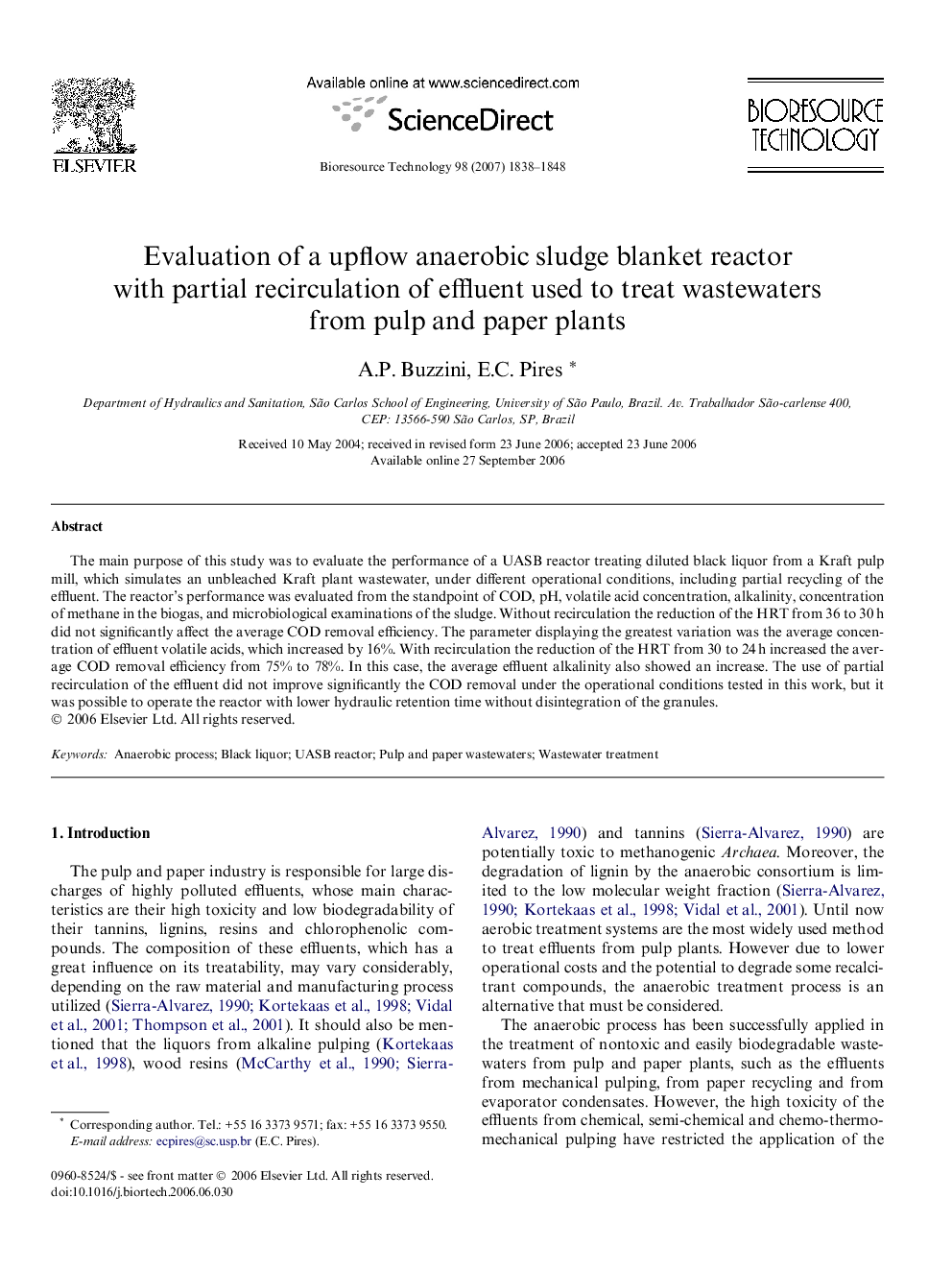| Article ID | Journal | Published Year | Pages | File Type |
|---|---|---|---|---|
| 686500 | Bioresource Technology | 2007 | 11 Pages |
The main purpose of this study was to evaluate the performance of a UASB reactor treating diluted black liquor from a Kraft pulp mill, which simulates an unbleached Kraft plant wastewater, under different operational conditions, including partial recycling of the effluent. The reactor’s performance was evaluated from the standpoint of COD, pH, volatile acid concentration, alkalinity, concentration of methane in the biogas, and microbiological examinations of the sludge. Without recirculation the reduction of the HRT from 36 to 30 h did not significantly affect the average COD removal efficiency. The parameter displaying the greatest variation was the average concentration of effluent volatile acids, which increased by 16%. With recirculation the reduction of the HRT from 30 to 24 h increased the average COD removal efficiency from 75% to 78%. In this case, the average effluent alkalinity also showed an increase. The use of partial recirculation of the effluent did not improve significantly the COD removal under the operational conditions tested in this work, but it was possible to operate the reactor with lower hydraulic retention time without disintegration of the granules.
